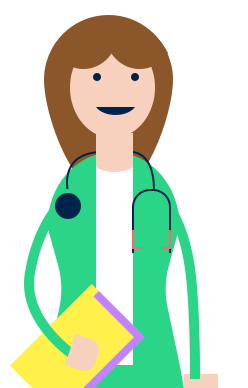Learn about the different diabetes treatment pills available, the guidelines when taking them and more.
Treatment of Diabetes Mellitus: Tablets
Treatment of type 2 diabetes begins with diet control. If diet alone is unable to control blood sugar levels, then tablets have to be taken. If both diet and tablets fail to control the blood sugar levels, insulin injections may be needed.
Oral anti-diabetes tablets are used for treating type 2 diabetes.
| Type of Tablet | Action | Comment |
|
Sulphonylureas e.g. - Chlorpropamide (Diabinese®) - Glibenclamide (Daonil®) - Gliclazide (Diamicron®) - Tolbutamide (Rastinon®) - Glimepiride (Amaryl®) | Help the pancreas to release more insulin and the body to use glucose more effectively. |
Take the tablet(s) daily immediately after meals (except Gliclazide which is consumed half an hour before meals).
Do not miss or delay meals. Otherwise, your blood sugar level may fall too low.
Sometimes other tablets (e.g. those for blood pressure) can react with anti-diabetes tablets. If in doubt, talk to your doctor or pharmacist.
Alcohol interferes with some of these tablets: consult your pharmacist if you are planning to drink alcohol. For example, having alcohol with Chlorpropamide causes side effects like redness and vomiting. |
|
Biguanides e.g. Metformin (Glucophage®) | Help the body to use glucose more effectively. |
Take the tablet(s) with meals or after meals. |
|
a-glucosidase inhibitors eg. Acarbose (Glucobay®) | Help to stop the quick rise of blood glucose after a meal. | Take the tablet(s) with the first mouthful or immediately before each of the three main daily meals. |
|
Meglitinides e.g. Repaglinide (Novonorm®) | Help the pancreas to release more insulin. | Take the tablet before meals. |
|
Thiazolidinediones e.g. Rosiglitazone (Avandia®) | Enhance insulin action and help the body to use glucose more effectively. | Take the tablet with or without food. |
Tell Your Doctor if You
- Are allergic to any medicines
-
Are
pregnant, or intend to become pregnant
-
Are
breastfeeding
- Are taking any other medicines
-
Have any other medical problems
Some Guidelines to Follow When Taking Your Diabetes Pill(s)
- Know the name and dosage of your diabetic tablet(s).
- Do not take more or less than what your doctor ordered.
- Take the tablet(s) at the correct times. Do not make any changes to your medication routine without consulting your doctor.
- Take your tablet(s) even when you are sick (sometimes the dosage may have to be changed, so do consult your doctor beforehand).
- Follow your meal plan. It will help your tablet(s) work better. Careless eating may cause the tablet(s) to lose their effect.
- If you miss a dose of the tablet(s), take it as soon as possible unless it is time for your next dose. In that case, do not take the missed dose and do not double the next one. You should go back to your regular dosage schedule.
- Check with your doctor or pharmacist before taking any other medicines, including over-the-counter medicines.
Rare Side Effects of Anti-diabetes Tablets
Please inform your doctor if you have the following symptoms:
- Dark or coloured urine
- Tiredness
- Itchy skin or skin rash
- Loss of appetite
- Light-coloured stools
- Unexplained fever and sore throat
- Increased sensitivity to sunlight
- Diarrhoea
- Yellowing of eyes or skin
- Nausea or vomiting
- Headache
Are Anti-diabetes Tablets Addictive?
You can never become addicted to anti-diabetes tablets. This is a common misconception among patients who do not like the idea of taking medication long-term.
The right way to think about diabetes medications is this: the tablets are there to do a job. If you take tablets only three days of the week instead of every day as instructed, you can expect your blood sugar to be high on the four days that you do not take the tablets.
Anti-diabetes tablets are meant to help keep you well. However, they won't work unless you take them.
Read more:
Take action:

Ask
HealthHub AI
HealthHub AI
Beta















